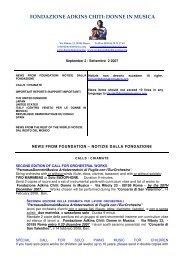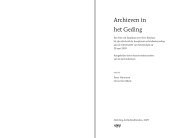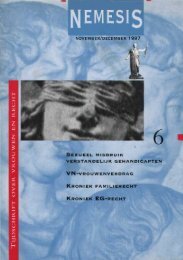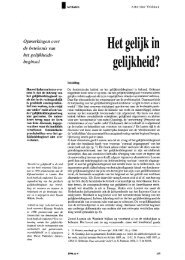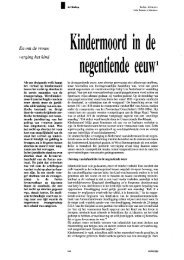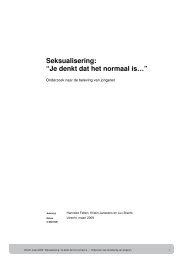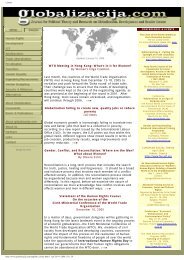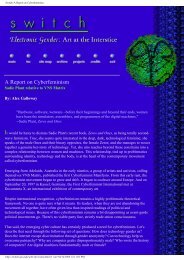Chicana Ways - Aletta
Chicana Ways - Aletta
Chicana Ways - Aletta
- TAGS
- chicana
- aletta
- www.aletta.nu
Create successful ePaper yourself
Turn your PDF publications into a flip-book with our unique Google optimized e-Paper software.
AnyBody's Concerns 6(2003)<br />
is not always unproblematic, as Nobuyoshi Araki's photographic<br />
work as well as his remarks on photography show. Araki, whom<br />
Marina Schneede praises as the most famous Japanese artist at<br />
the end of the 20th century (36), continues Otto Mühl's and<br />
Hans Bellmer's practice of tying up female models in seemingly<br />
erotic, aestheticized poses. The models do not only appear to<br />
the viewer like beautiful corpses but if we trust his words,<br />
Araki actually considers them victims of his "lethal" artistic<br />
instrument - the camera -, which grants him satisfying<br />
feelings of self-aggrandizement, mastery and total control:<br />
Wenn man das, was sich bewegt, festhält, ist das eine Art von<br />
Tod. Die Kamera, das photographische Bild beschwören immer<br />
schon den Tod herauf. Und ich denke beim Photographieren auch<br />
an den Tod, was man den Bildern ansieht. Vielleicht ist das<br />
eine orientalische, buddhistische Vorstellung. Für mich ist<br />
Photographieren ein Akt, bei dem mein "Ich" mittels des<br />
Gegenstandes hervorgeholt wird. Photographie war von Anfang an<br />
mit dem Tod verbunden. (Araki cited in Schneede 36)<br />
[If you keep hold of something which moves this is a sort of<br />
death. The camera, the photographic image always conjure up<br />
death. And when I take photographs I even think of death,<br />
which you can tell by the pictures. Maybe this is an oriental,<br />
buddhist idea. Photography for me is an act which brings out<br />
my "self" by means of the object. From its beginnings,<br />
photography has been associated with death.]<br />
38 It appears as though initially, i.e. in the 1960s and<br />
early 1970s, body art's major innovation was to make use of<br />
the body as artistic material, to stage the sheer physicality<br />
of making art and to search for ways of spiritual<br />
transcendence. Later on performance art typically went a step<br />
http://www.genderforum.uni-koeln.de/anybody/gutenberg.html (44 van 60)31-3-2005 18:21:57



